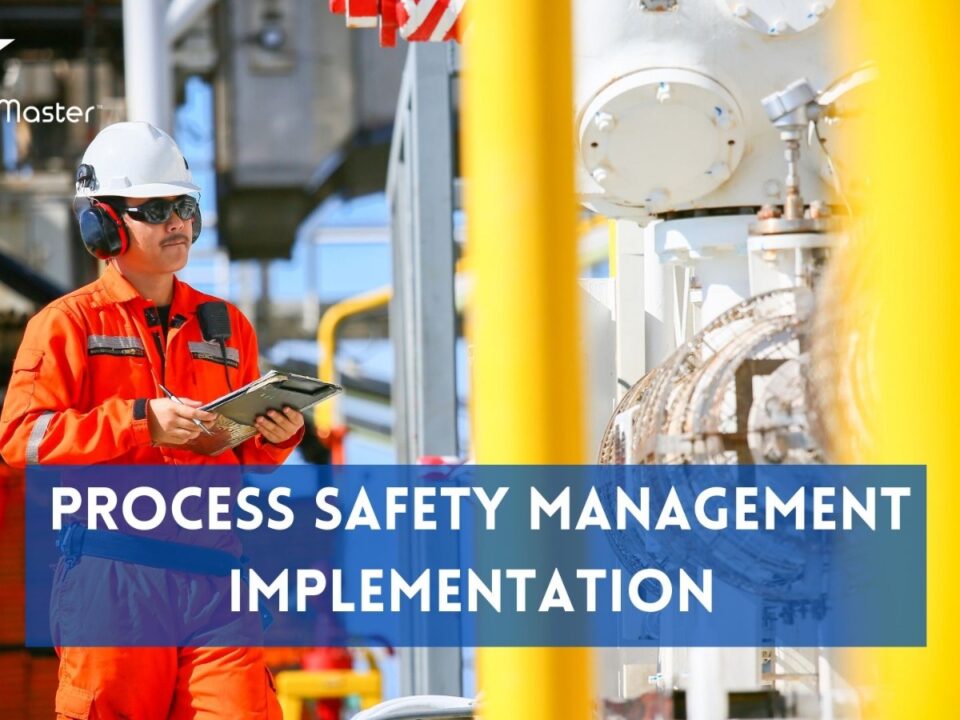Best Practices for Conducting an Effective Process Safety Audit – The Safety Master

The 5 Key Steps for a Successful Behavior Based Safety Implementation Process in the Workplace
March 13, 2025
What is HAZOP? A Complete Guide to Hazard and Operability Study by The Safety Master
March 14, 2025Introduction
Process safety audits are crucial in ensuring that industrial operations are safe, compliant, and efficient. These audits help identify potential hazards, ensure adherence to safety regulations, and promote a culture of continuous improvement. In this comprehensive guide, we will explore the best practices for conducting effective process safety audits, offering actionable insights and detailed strategies to enhance your audit process.
Understanding Process Safety
What is Process Safety?
Process safety involves managing the integrity of operating systems and processes handling hazardous substances. It focuses on preventing accidents and incidents that can result in significant harm to people, the environment, and property.
Importance of Process Safety
Ensuring process safety is vital to prevent catastrophic events, comply with regulations, and protect employees and the community. A robust process safety program minimizes risks and enhances operational reliability and efficiency.
Key Elements of Process Safety
- Process Safety Information (PSI): Detailed information on the chemicals, technology, and equipment used in processes.
- Process Hazard Analysis (PHA): Systematic assessment of potential hazards and risks associated with processes.
- Operating Procedures: Clear instructions for safely conducting activities within the process.
- Training and Performance: Regular training programs to ensure employees are competent in managing process safety.
- Mechanical Integrity: Ensuring equipment is designed, installed, operated, and maintained properly.
- Management of Change (MOC): Procedures to manage changes to process chemicals, technology, equipment, and procedures.
- Incident Investigation: Thorough analysis of incidents to prevent recurrence.
- Emergency Planning and Response: Preparedness for potential emergency situations.
- Compliance Audits: Regular reviews to ensure compliance with safety regulations and standards.
Preparing for a Process Safety Audit
Defining Audit Objectives
Clearly define the objectives of the audit. These may include assessing compliance with regulations, identifying hazards, verifying the implementation of safety procedures, and promoting a culture of safety.
Assembling the Audit Team
Form a multidisciplinary audit team with expertise in process safety, operations, engineering, and compliance. Ensure team members are trained and experienced in auditing techniques.
Developing an Audit Plan
Create a detailed audit plan outlining the scope, objectives, methodology, and timeline. Include checklists, templates, and guidelines to ensure a thorough and consistent audit process.
Conducting the Audit
Initial Assessment
Begin with a preliminary assessment to understand the scope of the processes and systems being audited. Review existing documentation and previous audit reports to identify areas of focus.
On-site Inspections
Conduct on-site inspections to observe processes, equipment, and work practices. Check for compliance with safety standards, proper use of personal protective equipment (PPE), and overall safety culture.
Document Review
Examine relevant documents such as process safety information, operating procedures, maintenance records, incident reports, and training logs. Ensure all documents are up-to-date and accurately reflect current practices.
Employee Interviews
Interview employees at various levels to understand their knowledge of process safety procedures, their experiences, and their perspectives on the organization’s safety culture.
Evaluating Audit Findings
Identifying Non-compliances
Identify any non-compliances with safety regulations, standards, or internal procedures. Categorize these findings based on their severity and potential impact.
Risk Assessment
Conduct a risk assessment to evaluate the significance of identified issues. Determine the likelihood and consequences of potential incidents resulting from non-compliances.
Prioritizing Issues
Prioritize issues based on their risk assessment. Focus on addressing high-risk issues that pose significant threats to safety and operations.
Reporting and Follow-up
Compiling the Audit Report
Compile a comprehensive audit report detailing findings, risk assessments, and recommended corrective actions. Include evidence such as photographs, documents, and interview notes.
Communicating Findings
Communicate the audit findings to relevant stakeholders, including management, employees, and regulatory bodies. Ensure clear and transparent communication to foster trust and accountability.
Developing Corrective Actions
Work with the audit team and process owners to develop actionable and realistic corrective actions. Assign responsibilities and set deadlines for implementing these actions.
Follow-up and Re-audit
Conduct follow-up audits to ensure corrective actions have been implemented effectively. Schedule regular re-audits to maintain continuous improvement in process safety.
Best Practices for Effective Audits
Regular Training for Auditors
Ensure auditors receive regular training on the latest safety standards, regulations, and auditing techniques. Continuous learning enhances their ability to conduct thorough and effective audits.
Leveraging Technology
Utilize technology such as audit management software, mobile inspection tools, and data analytics to streamline the audit process, enhance accuracy, and improve data management.
Continuous Improvement
Foster a culture of continuous improvement by regularly reviewing and updating safety procedures, training programs, and audit practices. Encourage feedback from employees to identify areas for enhancement




